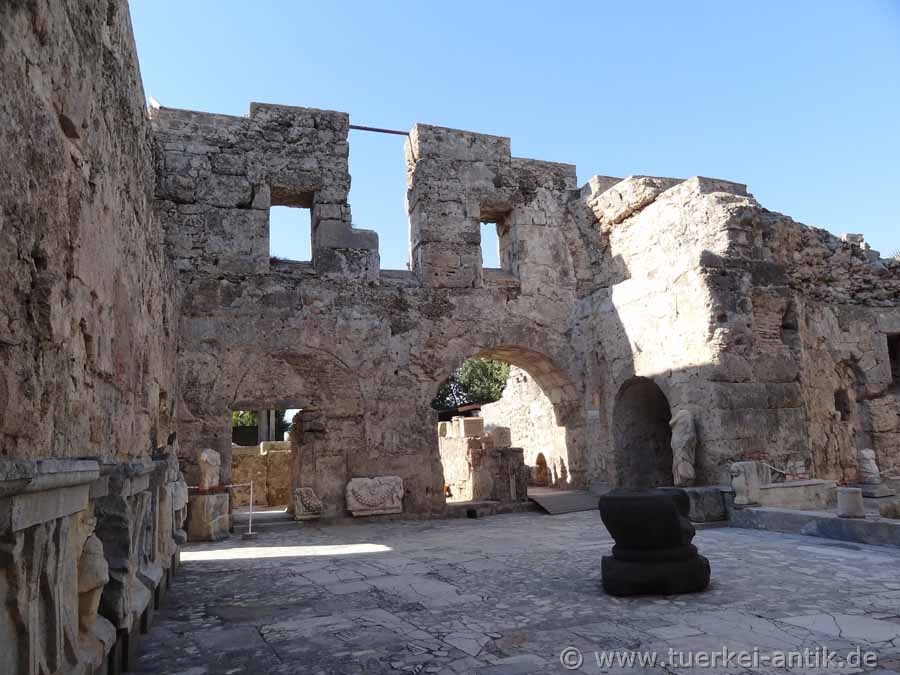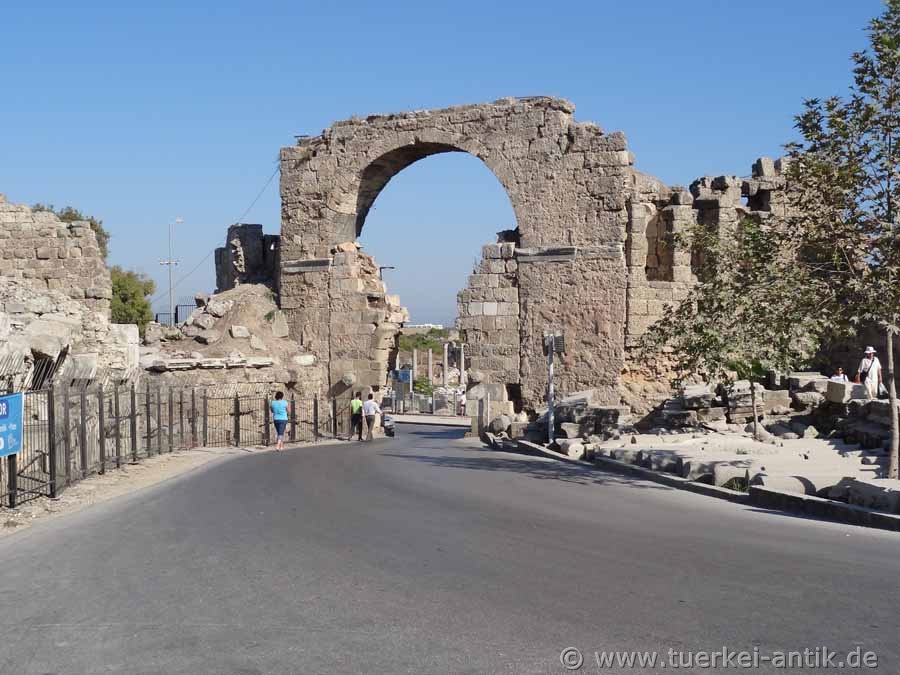 |
| Side | |||
|
|
|
||
| The Temple of Apollon | |||
|
The ancient side lies on a flat peninsula with harbour facilities at the top. Ancient traditions assume that Side was founded around the 7th century BC. The most important ruins date from the Roman era, the 2nd and 3rd centuries A.D. Other important buildings were erected when Side became a bishop's seat in the 5th or 6th century. The town was probably abandoned in the 10th century. An earthquake destroyed many buildings. |
|||
|
|
|||
| The temple of the goddess of fate Tyche on the trade agora | |||
|
Side is one of the oldest cities on the Turkish south coast. It is assumed that the first settlement of the peninsula already took place in the 2nd millennium BC. The name of the city comes from an Anatolian language and means "pomegranate" (Turkish: Nar) The pomegranate also decorates minted coins from the 5th century B.C. onwards. |
|||
|
|
|||
|
Today a bottleneck on the way to the centre of the antique Side, the 15 m high arch gate or also victory arch. It is a triumphal arch from the late imperial period. |
|||
|
|
|||
| The harbour today | |||
|
The expansion of the port made Side a prosperous and important trading metropolis with around 40,000 inhabitants in Hellenistic times. At the beginning of the 1st century the city fathers arranged with the Cilician pirates and Side became an important slave market. The income from the slave market was finally lost after Pompeius put an end to piracy in 67 BC.
|
|||
|
|
|||
| Part of the city wall | |||
|
With the disintegration of the Roman Empire, Side also experienced its decline. The siltation of the port in particular contributed to this. A large part of the city was abandoned and retreated to the city within the walls. It was not until the 5th and 6th centuries that people settled outside the city walls. Especially the up-and-coming Antalya outstripped Side. |
|||
|
|
|||
|
|
|||
|
Byzantine Hospital |
|||
|
Already in the 3rd century A.D. an active Christian community in Side is reported. Acts of the Christian trials from the time of Emperor Diocletian prove this. In Byzantine times Side was elevated to bishopric, but the city never regained its former importance.
|
|||
|
Sir Fancis Beaufort was the first to describe the ruins in 1817. In his time many buildings were still preserved, but covered with sand. Between 1947 and 1966, Turkish archaeologists systematically excavated Side and tried to stop the further development. The attempt to resettle the village failed because of the resistance of the inhabitants. The excavations continue to this day.
|
|||
 |
|||
| In the Agora bath, today the courtyard of the archaeological museum | |||
|
The city's archaeological museum, which has been housed in the old, partially restored Agora thermal baths since 1961, displays many exhibits found during the excavation. |
|||
|
|
|||
| The Theatre | |||
|
The (Roman) theatre of Side was moved in the middle of the 2nd century A.D. to its present visible state of development. About a century later the orchestra was rebuilt for arena fights. In the absence of a hill, a double arch gallery with a surrounding corridor was built. There are 23 vaulted passages leading to the diazoma between the first and second levels.
|
|||
| Photos: @chim | |||
| Translation aid:www.DeepL.com/Translator | |||
| Source: Wikipedia and others | |||
|
|
|||


